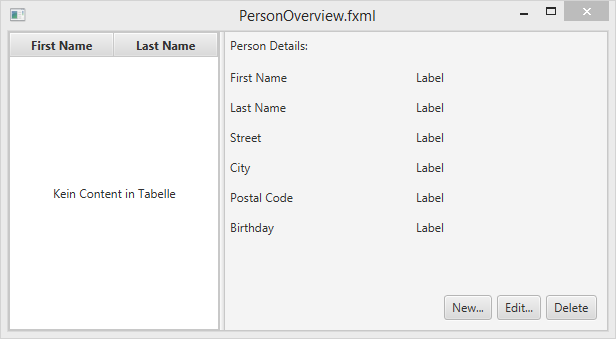

- #Buttonbar not in scene builder update
- #Buttonbar not in scene builder software
- #Buttonbar not in scene builder code
- #Buttonbar not in scene builder download
Inside an AnchorPane you can always set anchors to the four borders ( more information on Layouts). Select the TableView (not a Column) and set the following layout constraints to the TableView. Right-click the Split Pane in the Hierarchy view and select Fit to Parent.ĭrag a TableView (under Controls) into the left side of the SplitPane. Select the Anchor Pane in your Hierarchy and adjust the size under Layout (right side):Īdd a Split Pane (Horizontal Flow) by dragging it from the Library into the main area. (If Scene Builder does not open, go to Window | Preferences | JavaFX and set the correct path to your Scene Builder installation). Now you should see the Scene Builder with just an AncherPane (visible under Hierarchy on the left). Right-click on PersonOverview.fxml and choose Open with Scene Builder.
#Buttonbar not in scene builder download
Note: If you can't get it to work, download the source of this tutorial part and try it with the included fxml. Right-click on the view package and create a new FXML Document called PersonOverview. That means we will not have to directly work with XML. Further, we can use the graphical Scene Builder to edit our XML. I find it a cleaner way to keep the controller and view separated from each other. Looking around the internet you will encounter both. Either using an XML file or programming everything in Java. There are two ways to create the user interface. Note: Our view package will also contain some controllers that are directly related to a single view.
#Buttonbar not in scene builder code
According to this we divide our code into three units and create a package for each (Right-click on the src-folder, New… | Package): One very important principle is that of Model-View-Controller (MVC).
#Buttonbar not in scene builder software
Right from the start we will follow good software design principles. Remove the application package and its content if it was automatically created. In Eclipse (with e(fx)clipse installed) go to File | New | Other… and choose JavaFX Project. Oracle’s JavaFX Tutorials - Official JavaFX Tutorials by Oracle.ControlsFX API - JavaDoc for the ControlsFX project for additional JavaFX controls.JavaFX 8 API - JavaDoc for JavaFX classes.Java 8 API - JavaDoc for the standard Java classes.

You might want to bookmark the following links: Specify the path to your Scene Builder executable. Set the Compiler compliance level to 1.8. Remove the other JREs or JDKs so that the JDK 8 becomes the default. Open the Eclipse Preferences and navigate to Java | Installed JREs.Ĭlick Add…, select Standard VM and choose the installation Directory of your JDK 8. We need to tell Eclipse to use JDK 8 and also where it will find the Scene Builder:
#Buttonbar not in scene builder update
As an alternative you can use an update site for your Eclipse installation. The easiest way is to download the preconfigured distro from the e(fx)clipse website.

Eclipse 4.4 or greater with e(fx)clipse plugin.Basic application structure using the Model-View-Controller (MVC) pattern.Using Scene Builder to design the user interface.Set the dimensions of the scroll pane using the setter methods.Īdd the scroll pane to the layout pane or group. Set the node to the scroll pane using the setContent() method. You can set content to the scroll pane using the setContent() method.

In JavaFX, you can create a scroll pane by instantiating the class. A scroll pane holds a UI element and provides a scrollable view of it.


 0 kommentar(er)
0 kommentar(er)
